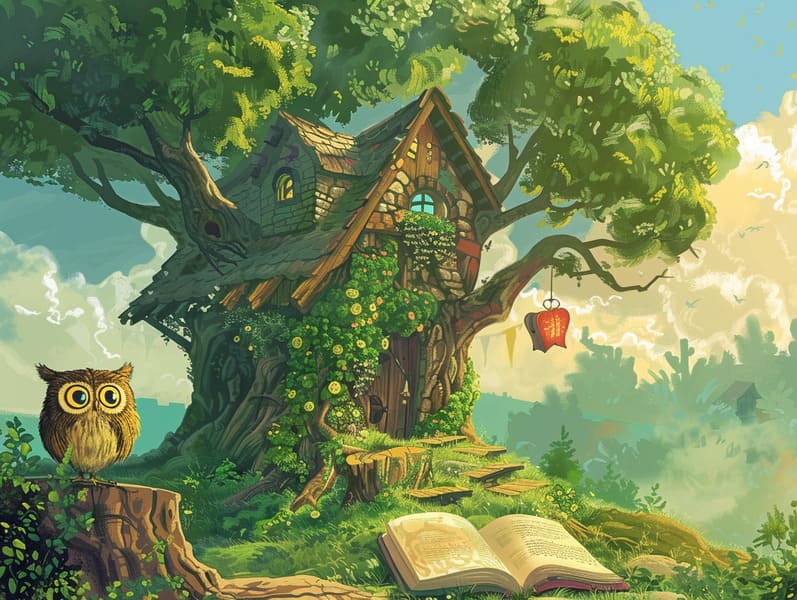A Brief History of Vintage Fairy Tales and Their Persistent Attraction.
A Brief History of Vintage Fairy Tales and Their Persistent Attraction.
Blog Article

Popular fairy tales have old origins. These stories have been recounted from one generation to the next centuries before they were ever put on paper. They came from a variety of backgrounds, including European traditions. They were initially shared among mature audiences, often carrying themes and messages aligned with the societal norms and beliefs of the time.
The Brothers Grimm, Jacob and Wilhelm Grimm, were among the first to collect and release many of these beloved stories. Their anthology, "Grimm's Fables," included classics like "Cinder Maid," "The Bread Crumb Trail," and "The True Story of Snow White," which have since become mainstays in the world of timeless fairy tales. Similarly, Andersen's enchanting tales, such as "The Mermaid," and "The Story of the Ugly Duckling," have captivated hearts worldwide, establishing their place in the pantheon of classic fairy tales.
Despite their historical roots, these tales remain as applicable as ever, especially as kids' bedtime tales. These enchanting tales are now available in diverse formats, including gorgeously illustrated books, fantastical animations, and online fairy tales.
Their persistent charm can be connected to several enchanting factors:
Life Lessons: Traditional fairy tales often present important moral lessons. Stories like "The Wolf and the Liar" teach the importance of integrity, while "The Tale of the Tortoise and the Hare" highlight the qualities of determination and unpretentiousness. These stories offer the young clear distinctions between right and wrong, building their moral compass in a soft yet profound way.
Empathy and Awareness: Fairy tales frequently feature characters facing tests and troubles, fostering young listeners to connect with their struggles and cheer for their triumphs. For instance, "Beauty and the Beast" highlights the virtue of seeing inner beauty to acknowledge the real person of a individual, fostering insight and awareness.
Cultural Insights: Many classic fairy tales are interwoven with the cultural contexts from which they grew. Immersing in these stories can provide enlightening views into different ways of life, building a sense of cultural respect and perception.
Imagination and Innovation: The mythical elements in ancient fairy tales—magic wands—revitalize children’s here fantasies. These tales lead readers to mythical realms, promoting fantastical thinking and a sense of astonishment that persists a lifetime.
Classic fairy tales are not only enchanting but also pedagogical. They act as alluring tools in advancing various cognitive and affective skills in kids. When fairy tales are recited, they foster communication skills by offering new words and intricate sentence structures. This practice also advances auditory perception and concentration, as little ones pay close attention, expectant to see what happens next.
Furthermore, debating the themes and characters of fairy tales can enhance reasoning skills and analytical skills. Children are educated to detect patterns, expect results, and catch on to cause and effect. These debates also further little ones reveal their thoughts and feelings, fostering their emotional intelligence.
In today’s information age, the availability of web-based fairy tales has made these stories more acquirable than ever. Internet resources and software extend large libraries of traditional fairy tales that can be viewed or listened via anytime, anywhere. Fairy tales told out loud are particularly common, giving an charming way for kids to take part in these bewitching tales. Narrated books and read-out-loud stories bring characters and settings to life, often supported by mesmerizing audio effects and songs that improve the tale experience.
The enduring charm of classic fairy tales lies in their ability to modify to contemporary times while holding onto their essential themes. Contemporary versions of these narratives often incorporate more varied protagonists and modern settings, making them pertinent to today’s audience. However, the underlying themes of guts, compassion, and justice remain unchanged, continuing to impact listeners of all ages.
Old fairy tales also offer a sense of comfort and knowability. They afford a well-structured narrative with a evident beginning, middle, and end, often finishing with the wrap-up of conflicts and the triumph of good over bad. This steadiness can be relieving for young readers, rendering a sense of stability in an unpredictable world.
Ancient fairy tales continue to charm and teach new generations, maintaining their spell and applicability in modern society. As kids' bedtime tales, they deliver up a perfect blend of fantasy and learning, encouraging moral values, empathy, and creativity. The proliferation of online fairy tales and the commonness of fairy tales recited secure that these timeless stories remain within reach to new generations.
By retaining and relating these tales, we continue to praise the rich tapestry of human imagination and cultural heritage. Whether you are reading a colorful picture book, accessing a cyber library, or hearing an audiobook, the allure of children's fairy tales is always within reach. These narratives demonstrate of the persistent influence of storytelling and its ability to bind us across eras and regions.
Be it you are enjoying a richly illustrated book, accessing a internet library, or listening to an read-aloud story, the captivation of ancient fairy tales is always within reach.
These tales remind us of the unfading essence of tales and its ability to bond us across epochs and places, weaving a spell that enchants and educates alike.